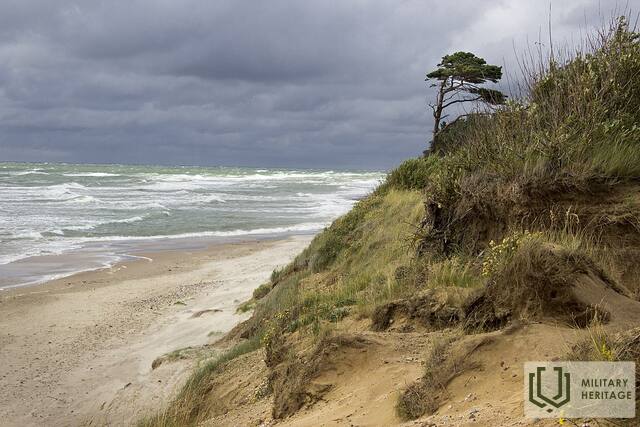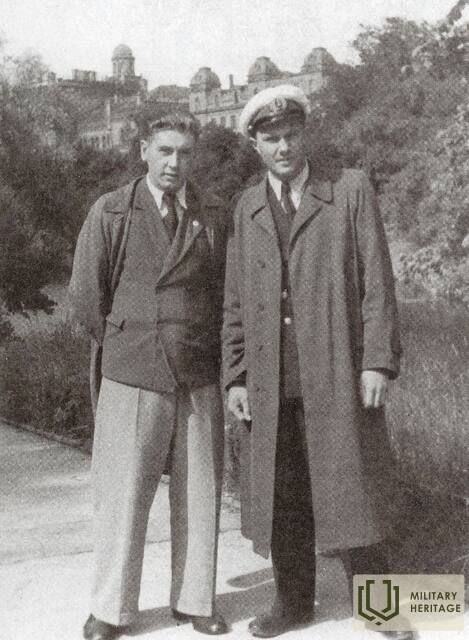The steep bank of Staldzene, from which refugee boat traffic to Sweden took place in 1944 Trail

In 1944, there was active refugee boat traffic from the Staldzene cliffs to the shores of Sweden.
Ž. Lapuķis' memories of meeting with Dr. E. Bakusis:
“One afternoon, a local police officer came to me and quietly told me that a boat from Sweden was expected to arrive that night near the village of Staldzene near the Koku hills to pick up refugees. My task was to come with a group of guards from my unit to guard this place and, if necessary, help to transport the refugees to the motorboat. [..] Not far from the sea, without waiting, a man stood in front of us on the rope, wearing a gray half-coat with a turned-up collar and a jockey's hat pulled low on his forehead. He said a quiet good evening and asked: “Is this the road to Lošupi?” That was the watchword for Swedish riders in that place. He said that he was here on a special mission, but at the same time he would like to get his family to Sweden safely. Then, to my great surprise, he pulled out our forestry plan from his pocket. In the twilight, I began to watch the stranger's face and soon recognized him. It was Bakūzis, the head of the Forestry Department's Forestry Management Division [..] It was approaching midnight when we saw a black dot in the distance in the sea. We gave the agreed signal with a flashlight, repeating it several times. After a short while, the same answer came from the black dot, only it was not from a flashlight, but the light transmission of a warship. We realized that the boat was no longer expected that night and the group of refugees was starting to disperse. Bakūzis invited us both with the company commander to stay with his family. We found it in a hollow in the dunes under a thick fir tree. There, in the green moss, with their heads resting on a white pillow, three offspring of this family were lying in a deep sleep, and next to them, with a white scarf around their heads, sat the caring mother of the house. The father of the house found a bottle and the mother of the house offered sandwiches. It seemed that with their Latvian sincerity they were the real father and mother of the house, who had found their home on this rainy autumn night under the fir tree of their homeland. On one side the sea hisses, on the other a forest massif and heavy raindrops slowly fall through the branches of the fir tree. We emptied the bottle, but refused the sandwiches, because we realized that they needed them more themselves.
Used sources and references:
Ž. Lapuķis. Dr. E. Bakūzi in memory // Meža Vēstis, 1978, No. 167, pp. 5-6.
Related timeline
Related topics
Related stories
The first refugee boat "Centība" from Bambali
On 31 October 1944, the boat "Centība" left the Kurzeme coast. The departure of this boat was reconstructed by Valentīne Lasmane, the Convener of the Latvian Central Council, from the recollections of several fellow passengers
Refugee boat transfer point from the Kurzeme coast to Sweden near the "Pāži" houses
One of the important places of relocation was near the “Pāži” house, where a monument has now been erected - “Sail of Hope”. “The ships came regularly and the most people left from “Pāži”, says the memories of I. Freibergs.
The secret and dangerous activities of Valdemārs Ģinters
Valdemārs Ģinters' name was the last hope for many Latvian refugees to escape to Sweden. Too much attention from the refugees was dangerous, and therefore Ģinters kept it a secret.



















